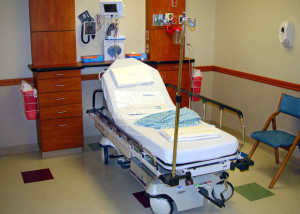Atrial Fibrillation (Afib) is a serious medical condition that affects about one in ten Americans over the age of 65. If someone suffers from atrial fibrillation, which is defined as an irregular heartbeat not associated with a heart valve defect, they will experience what doctors call “bouts” of the condition.
 When a person has a bout of atrial fibrillation, the normal rhythm of the heart that pumps blood throughout the body will stop, and there will be a flutter in the heart that is not effective at pumping blood. At this point, the patient will typically have symptoms such as a very fast heartbeat, shortness of breath, and dizziness. While these symptoms can be uncomfortable and dangerous, the real reason people fear Afib is because it can quickly lead to a stroke when the brain is deprived of blood.
When a person has a bout of atrial fibrillation, the normal rhythm of the heart that pumps blood throughout the body will stop, and there will be a flutter in the heart that is not effective at pumping blood. At this point, the patient will typically have symptoms such as a very fast heartbeat, shortness of breath, and dizziness. While these symptoms can be uncomfortable and dangerous, the real reason people fear Afib is because it can quickly lead to a stroke when the brain is deprived of blood.
A recent news release from Harvard Medical School discusses Afib and looks at the various treatment options. As discussed, for many years, Warfarin (Coumadin) was the only effective treatment for atrial fibrillation. This is a traditional blood thinner, and when the blood is thinner, there is a much lower chance of having a bout of Afib.
While Coumadin has been effective for decades now, the problem is that it can be difficult for the average patient to comply with all of the difficult requirements when taking the medication. If the patient does not comply with the necessary precautionary measures, there is a significant chance the patient will suffer from a serious internal bleeding condition, which can be fatal. However, if a person shows up at the emergency room with a Warfarin related bleeding disorder, doctors are able to quickly administer a reversal agent (antidote) and stop the internal bleeding.
The reason this complication can happen is because the dosage must be carefully monitored, because the absorption rate can change frequently. This means that a patient must have frequent blood tests to make sure the dosage is correct. The patient must also carefully watch his or her diet, because certain foods high in Vitamin K, like dark leafy vegetables, can affect how the body uses Warfarin.
This was simply what a patient had to contend with until new oral anti-coagulants (NOACs) such as Pradaxa came on the market. The makers of Pradaxa marketed their drug as a safe and convenient alternative to Warfarin that did not require patients to have frequent blood tests and change doses. However, as we seen in various Pradaxa injury lawsuits, there are allegations that drug makers did not warn patients of the need to adjust the dose. As a result of this and other defects in the design and safety testing of Pradaxa, many people became sick and some died of internal bleeding conditions. Until very recently, there was no antidote for Pradaxa, meaning there was nothing doctors could do to help patients who arrived at the emergency room with severe internal bleeding.
There is also a mechanical solution for some Afib patients who cannot or will not take any of the available drugs. This involves a “Watchman” device being implanted in the heart to prevent deadly bouts.
If you are a victim Pradaxa and live in Massachusetts, call Jeffrey Glassman Injury Lawyers for a free and confidential appointment — (617) 777-7777.
Additional Resources:
Atrial fibrillation: The latest treatment trends, May 12, 2016, Harvard Medical School
More Blog Entries:
Risk for Internal Bleeding after Taking Pradaxa, August 22, 2014, Boston Dangerous Drugs Injury Lawyer Blog
 Product Liability Lawyer Blog
Product Liability Lawyer Blog

